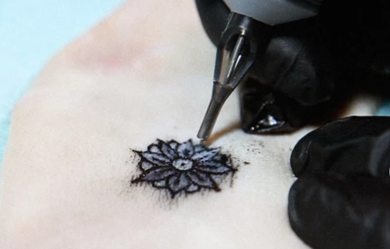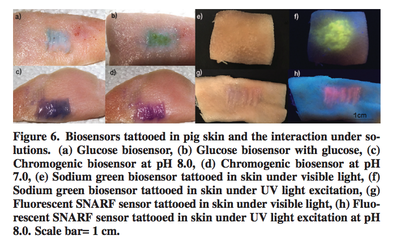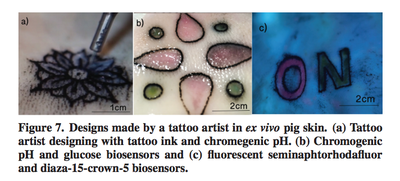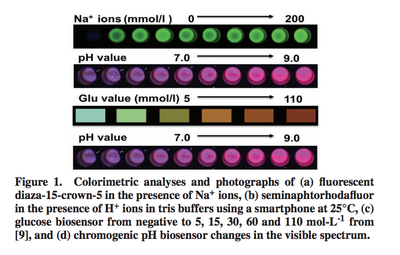|
by Navya Baranwal '20 Are you feeling a little sick? Let’s check your tattoo! Lying at the intersection of self-expression and art, tattoos evoke certain ideas and pieces of one’s identity. While tattoos have long belonged in the art arena for several years now, current research is showing that tattoos may have scientific applications--they can tell us about our health.
This innovation allows the human skin to become an “interactive display.” The d-abyss tattoo has a large scope for people with diabetes. As sugar levels rise, the biosensor in the tattoo changes from blue to brown. By portraying glucose levels through the tattoo, diabetic people can know when to take their insulin injections or when to adjust their sugar consumption. Instead of taking constant pin-prick blood tests, these people can infer their blood sugar levels based on the color of the tattoo [3]. This tattoo can also help dehydrated people, as sodium levels will dictate how much water is in the body. (Higher sodium level = You should drink some water now!) Under UV light, the biosensors will turn bright green when sodium levels rise [4]. The ink also changes color from pink to purple based on pH levels. This ongoing innovation has applications beyond its original goal. Perhaps bio-interfaces and sensors can be used to compile data from body metabolic processes. A data-pool that has information about a person’s bodily fluctuations over vast periods of time can be very valuable when it comes to diagnosing different conditions or simply understanding one’s metabolism. For instance, if a physician wants to find out about the patient’s sodium levels in the morning on a Friday versus the afternoon of a Sunday, they can look at the information stored in the bio-interface.
With time and research, these questions will be answered. Slowly, tattoos, known for being quirky, epic, and beautiful, might even become medical. Sources:
0 Comments
Leave a Reply. |




